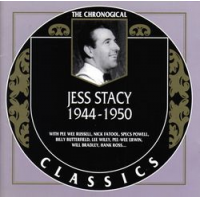
“Stacy managed to draw an individual tone from the piano and his unique tremolo at the end of each phrase and his habit of following an emphasized note with one which seemed almost to be tucked underneath the stressed one, resulted from his acute sense of dynamics. His Harlem-style rolling left hand harked back to the stride players of the Twenties but the strongest influence came from the pianists Earl Hines and Teddy Wilson."
JazzWax tracks: My favorite Jess Stacy collection is Jess
This story appears courtesy of JazzWax by Marc Myers.
Copyright © 2024. All rights reserved.


























